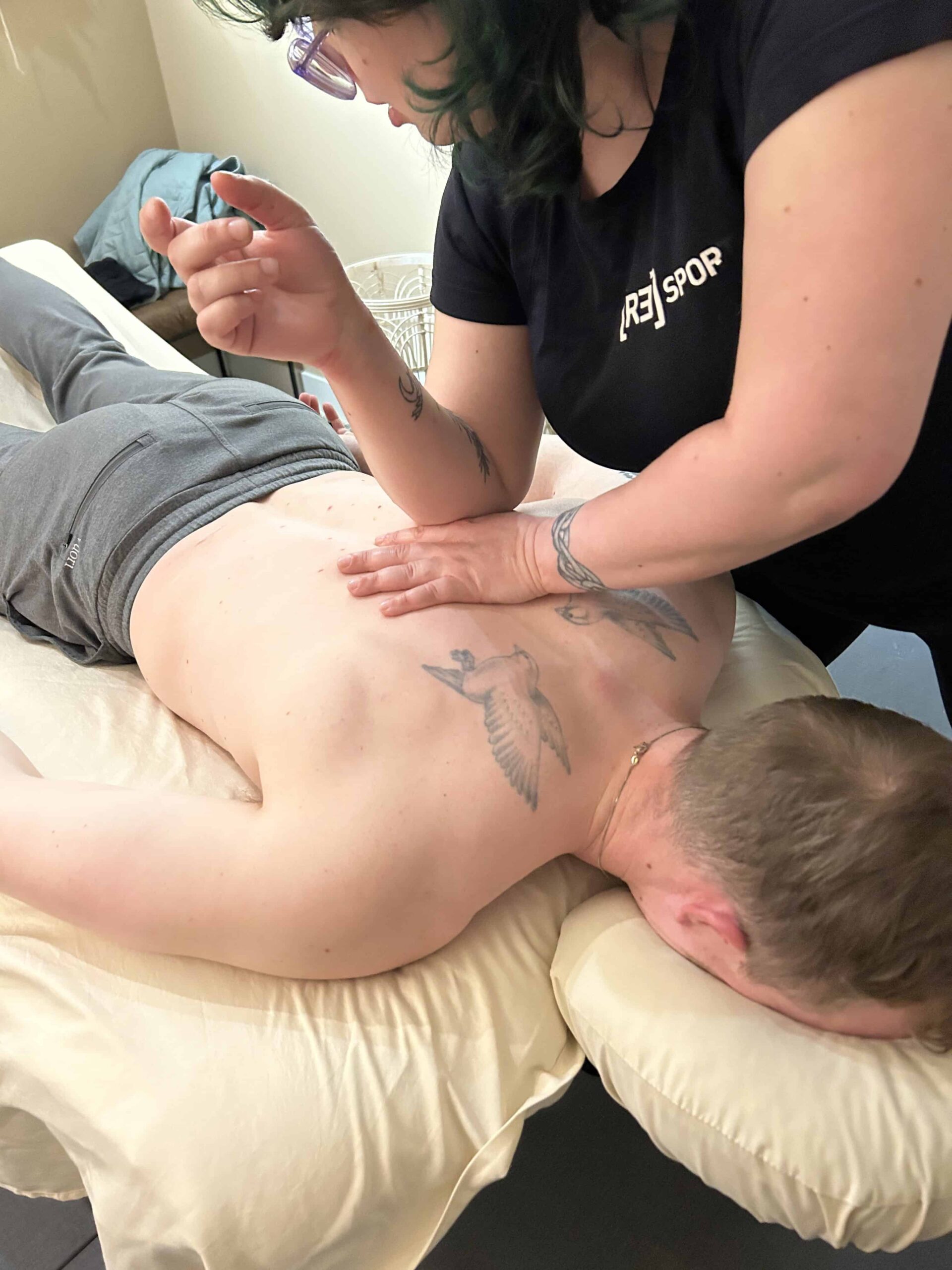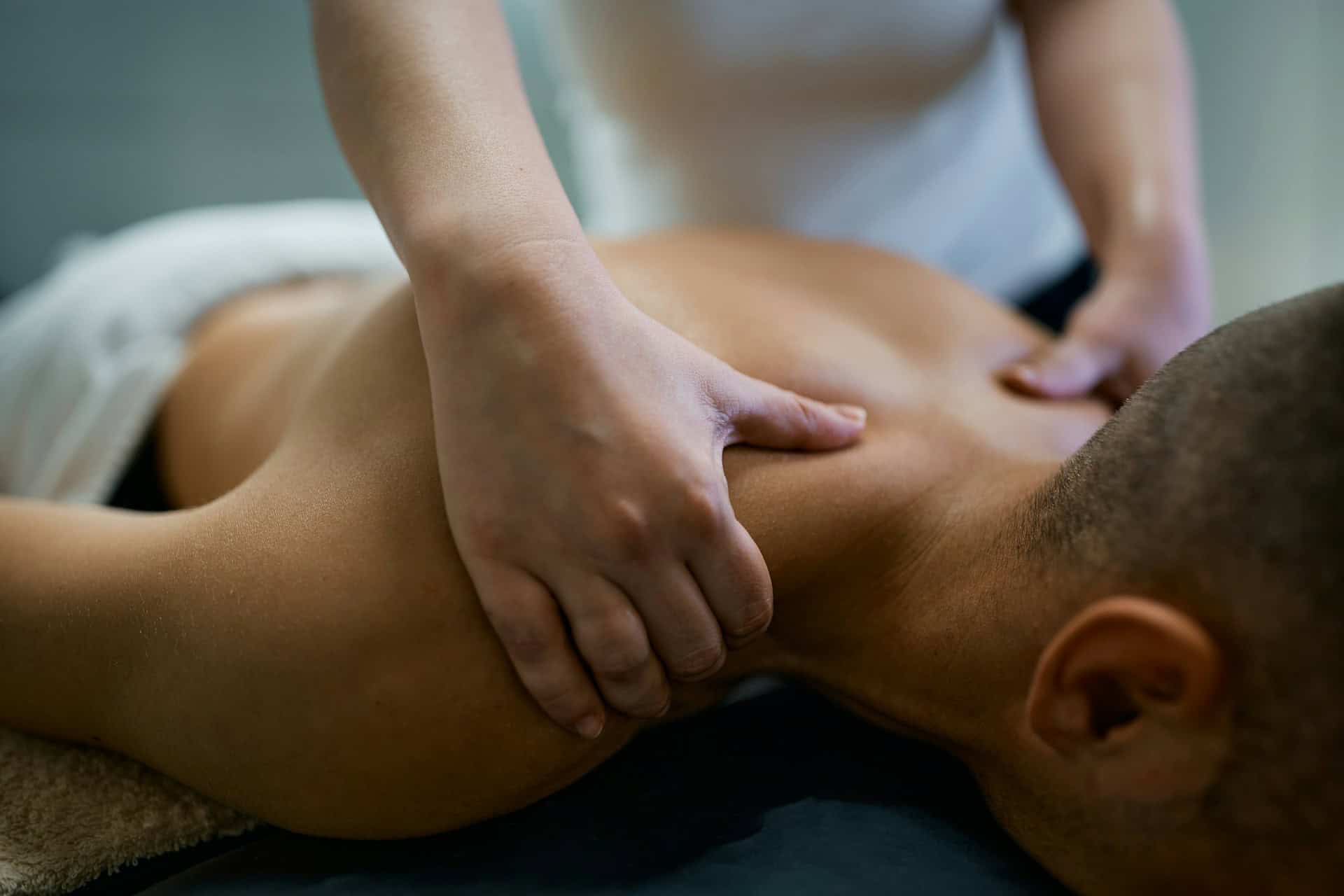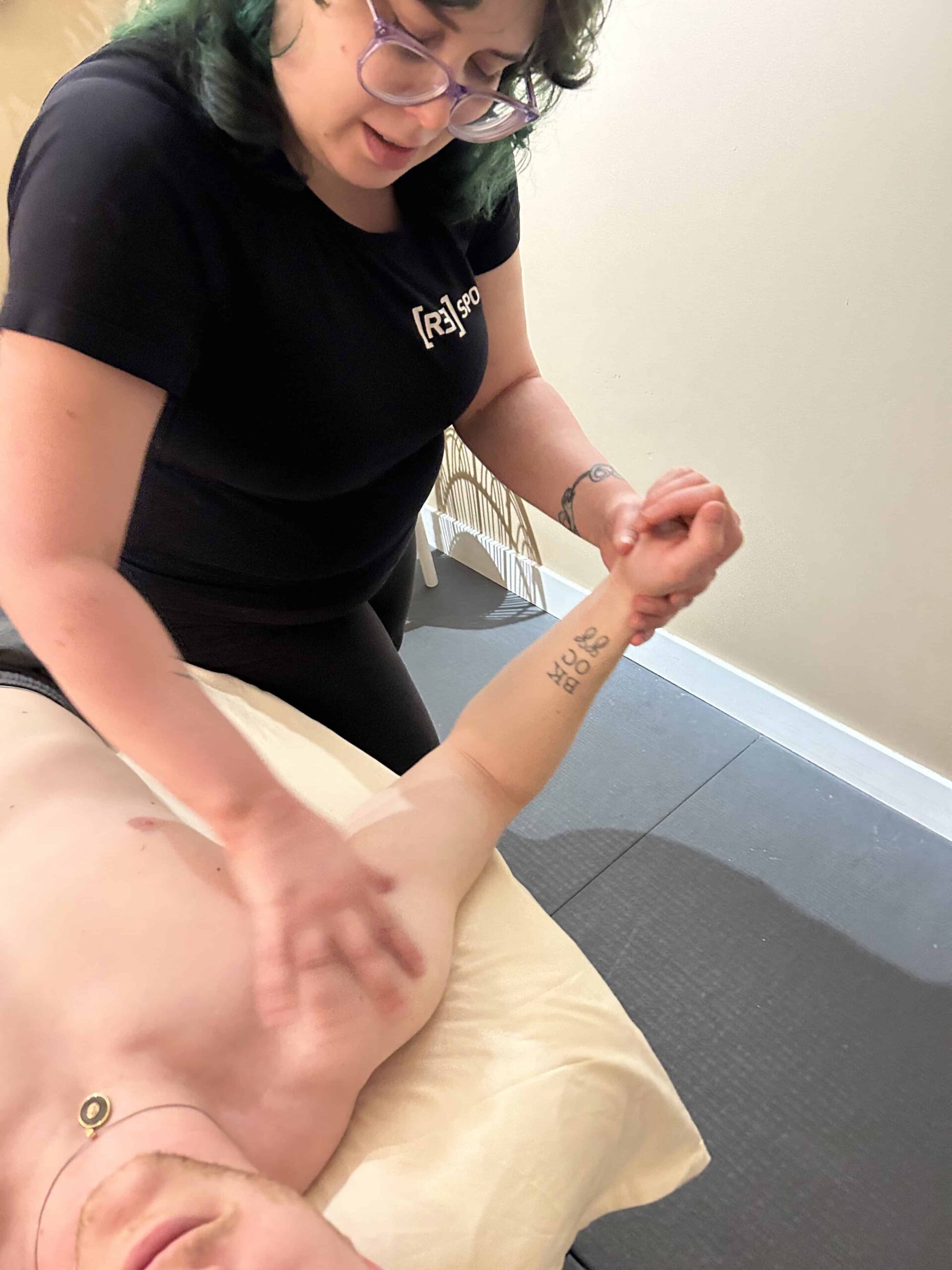
Trigger point therapy is a type of massage therapy used to address muscle pain and tightness. Our team will work with you to determine if trigger point therapy is the best option for you and create an individualized plan for the best results.


Trigger point therapy is a hands-on technique used to address pain and tightness in muscles. It targets specific areas within your muscles called trigger points, which are taut bands of muscle that can cause pain even in areas beyond where you feel the trigger point. These points are typically tender to the touch, and may even cause a twitching sensation in a connected muscle when pressed.
Trigger points develop from a number of different ways, including overuse, injury, poor posture, and stress. Trigger point therapy can address conditions like chronic pain, movement dysfunction, sports injuries, postural issues, and other conditions. Our team uses various techniques to apply pressure to trigger points, including fingers, elbows, or tools. The pressure helps elongate the contracted muscle fibers, reducing pain signals and improving blood flow to the area.
If you think trigger point therapy may be a good treatment for you, schedule an appointment with us today.


Trigger point therapy offers a range of benefits for those struggling with pain and limitations caused by trigger points, including:
While trigger point therapy offers a range of benefits, it’s most effective when combined with other forms of treatment, like dry needling, massage, and physical therapy as part of a comprehensive treatment plan.


Our team will examine your muscles and pinpoint any trigger points. These points will likely feel taut and tender. Once identified, we will address these trigger points using various techniques, including sustained pressure applied with hands, elbows, or tools. We describe the pressure as firm, but manageable. The treatment itself usually lasts 30 to 60 minutes, depending on the number of trigger points and your individual needs.
After your session, you may experience some soreness or tightness for a day or two. This is temporary and you can use ice packs and gentle stretching to alleviate pain. The number of trigger point therapy sessions you’ll need depends on your individual condition and severity, but we’ll work with you to develop a personalized treatment plan so you know what to expect moving forward.

There isn’t a single “most common” trigger point, but some areas of your body are particularly prone to developing them. Your upper back and shoulder muscles are often affected due to factors like posture and repetitive motions. The location of your trigger points will depend on your individual activities and posture.
The best approach for trigger points often involves a combination of techniques. While trigger point therapy itself is a treatment, we also incorporate mobility work, dry needling, and physical therapy. A conversation with our team will let you know what course of action we think is best based on your individual needs.
Massage can be a helpful tool for addressing trigger points and our team uses various massage techniques, applying sustained pressure to trigger points in efforts to relax the contracted muscle fibers and reduce pain signals.
These hypersensitive knots in your muscles cause pain that spreads beyond the spot itself, limiting your range of motion. Trigger points can also disrupt muscle function, leading to weakness and hindering your daily activities.
Your initial pain can worsen, moving beyond the knot itself. Tight muscles restrict your range of motion, making daily tasks difficult, but this pain can also disrupt muscle function, causing weakness and fatigue.